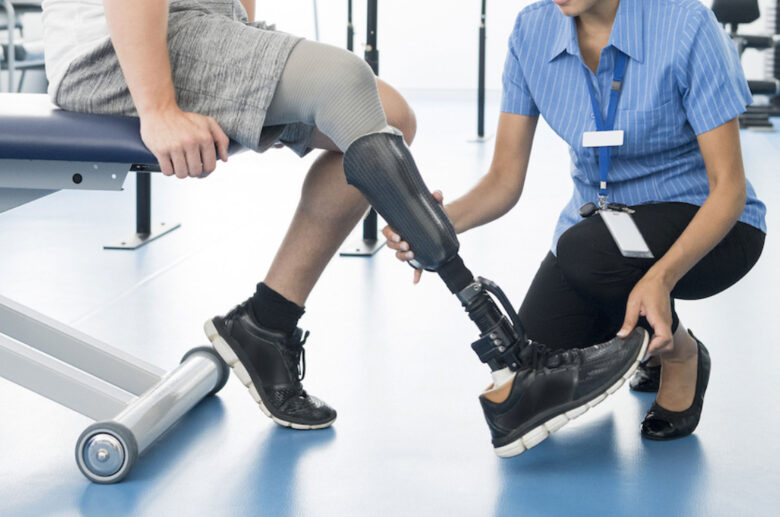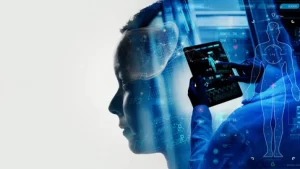The invention of prosthetic limbs has been very helpful for people who have lost limbs due to accidents, illness or birth defects. Although traditional prosthetics are effective, they are not always advanced enough to mimic all the movements of a normal limb. But the rise of artificial intelligence (AI) is changing the field and ushering in a new era of prosthetics, making them more useful, flexible and comfortable for users. This article discusses how artificial intelligence is changing the world of prosthetics and making their use easier and more natural.
Let’s Look Back at the History of Prosthetics:
Prosthetics have come a long way from the simple alternatives of the past. In the past, prosthetics were mainly made to replace missing body parts and did not have many other uses. As technology advances, prosthetic limbs become better and more responsive, but they are still not as smooth as real limbs.
The Rise of AI in the Field of Prosthetics:
Artificial intelligence plays a key role in bridging the gap between standard prosthetics and the complex way natural limbs work. Artificial intelligence uses machine learning algorithms and neural networks to enable prosthetics to learn and change the user’s movement patterns, making the experience more personalized and natural.
Machine Learning Leads to Better Features:
Machine learning, a subset of AI, allows prosthetics to see and understand data from the user’s real limb and environment. Artificial intelligence-based prosthetics can process this data to change the way they move in real time, making their movements more natural and smooth. This flexibility is important for difficult tasks that require accuracy and quick reactions, such as walking on uneven terrain or gripping things.
The Role of AI in Prosthetic Control:
One of the most difficult things about creating a prosthetic limb is creating a control system that allows the person using it to move the limb easily and without difficulty. Artificial intelligence plays a major role in this area by enabling more powerful control systems. Myoelectric prostheses use muscle signals from the missing limb to power the prostheses. Now, artificial intelligence is being added to these prosthetics to help them better understand and respond to these signals. This approach can provide more precise control by accurately mimicking the movements people want to make.
Feedback from Sensors and AI:
Sensory input is an important part of the functioning of a natural limb, and this is difficult to replicate in a prosthetic limb. This is changing, as artificial intelligence makes it possible to create prosthetics that can provide tactile input. By adding sensors that measure pressure, temperature and texture and using artificial intelligence to process that data, users can get feedback that helps them understand how strong their grip is or what type of surface they are touching, making improving the prosthetic overall more useful.
Personalize and Change:
Artificial intelligence (AI) is an important part of tailoring prosthetics to the needs and movement patterns of each individual. Artificial intelligence programs can learn from the way people use prosthetics and change the way they work based on what they learn. This learning process ensures that the device better suits the user’s needs over time, making it more comfortable and usable.
Application of AI in the Design and Production of Prosthetics:
Artificial intelligence is not only changing the way prosthetics work but also the way they are manufactured and planned. The performance and comfort of prosthetic limb designs can be improved with AI-powered predictive models and simulations. AI can also speed up the manufacturing process, making it cheaper and more accessible to more people.
Questions to Think About and Ethical Issues:
Artificial intelligence devices are a big step forward, but there are also some problems. The price of these high-tech prosthetics may be too high for many people, raising concerns about inequality and access. There are also ethical issues to consider around data privacy and security when prosthetics receive and use personal information.
How AI Will Change the Future of Prosthetics:
The future looks very bright as artificial intelligence is applied to limbs. We can expect more advances in sensory input, better control and adaptability, and perhaps even the creation of prosthetics that can be controlled via brain-computer interfaces. Artificial intelligence will also play a greater role in tailoring devices to the needs of each individual, which will improve the quality of life for people who use prosthetics.
Conclusion:
The application of artificial intelligence in prosthetic limb production is a major advancement in prosthetic limb production, control and experience. It connects the complex movements of artificial arms with natural movements, giving users unprecedented comfort and control. Although there are still problems, mainly accessibility and ethical issues, advances in artificial intelligence in prosthetics are changing people’s lives, giving them more freedom and freedom of movement. As artificial intelligence continues to develop, it will certainly bring more options in the field of prosthetic technology. This will make these advanced limbs easier to use, more intuitive and more consistent with the way the human body naturally works.
FAQs:
1. How can AI improve the function of prosthetics?
Artificial intelligence improves prosthetics by allowing them to learn and adapt to the user’s movement patterns. Through machine learning algorithms, artificial intelligence prosthetics can analyze data about the user’s residual limb and the environment, adjust movements in real time and provide more natural and fluid movements.
2. What advances has artificial intelligence brought to the field of prosthetic control systems?
Artificial intelligence has significantly improved the control system of prosthetics, especially myoelectric prostheses. By accurately interpreting the muscle signals from the residual limb, artificial intelligence can achieve more detailed and sensitive control, allowing the prosthetic limb to accurately mimic the user’s intended movements.
3. How does artificial intelligence promote sensory feedback in prosthetics?
Artificial intelligence plays a key role in the development of prosthetics that provide tactile feedback. By integrating sensors that detect pressure, temperature and texture and processing this information with artificial intelligence, users can get feedback that helps them understand the strength of their grip or the properties of the surface they are touching.
4. Can artificial intelligence customize personalized prosthetics for individual users?
Yes, artificial intelligence algorithms can personalize prosthetics to meet the specific needs and movement patterns of individual users. The artificial intelligence system learns from the user’s behavior over time, allowing the prosthetic limb to better adapt and respond to the user’s individual needs, improving comfort and efficiency.
5. What are the future prospects and challenges of artificial intelligence prosthetics?
The future of artificial intelligence in prosthetics includes advances in sensory feedback, improvements in adaptability and control, and the potential of brain-computer interfaces to control limbs. However, challenges remain, such as the high cost of advanced prosthetics, concerns about accessibility and inequality, and ethical issues related to data privacy and security.



